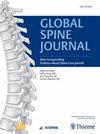A New Method for Scoliosis Screening Incorporating Deep Learning With Back Images
IF 3
3区 医学
Q2 CLINICAL NEUROLOGY
引用次数: 0
Abstract
Study DesignRetrospective observational study.ObjectivesScoliosis is commonly observed in adolescents, with a world0wide prevalence of 0.5%. It is prone to be overlooked by parents during its early stages, as it often lacks overt characteristics. As a result, many individuals are not aware that they may have scoliosis until the symptoms become quite severe, significantly affecting the physical and mental well-being of patients. Traditional screening methods for scoliosis demand significant physician effort and require unnecessary radiography exposure; thus, implementing large-scale screening is challenging. The application of deep learning algorithms has the potential to reduce unnecessary radiation risks as well as the costs of scoliosis screening.MethodsThe data of 247 scoliosis patients observed between 2008 and 2021 were used for training. The dataset included frontal, lateral, and back upright images as well as X-ray images obtained during the same period. We proposed and validated deep learning algorithms for automated scoliosis screening using upright back images. The overall process involved the localization of the back region of interest (ROI), spinal region segmentation, and Cobb angle measurements.ResultsThe results indicated that the accuracy of the Cobb angle measurement was superior to that of the traditional human visual recognition method, providing a concise and convenient scoliosis screening capability without causing any harm to the human body.ConclusionsThe method was automated, accurate, concise, and convenient. It is potentially applicable to a wide range of screening methods for the detection of early scoliosis.结合深度学习与背部图像的脊柱侧弯筛查新方法
研究设计回顾性观察研究。研究目的脊柱侧弯症常见于青少年,全球发病率为 0.5%。由于脊柱侧弯症往往缺乏明显特征,因此在早期很容易被家长忽视。因此,许多人直到症状变得相当严重时才意识到自己可能患有脊柱侧弯症,严重影响了患者的身心健康。脊柱侧弯症的传统筛查方法需要医生花费大量精力,并需要不必要的放射线照射;因此,实施大规模筛查具有挑战性。深度学习算法的应用有可能降低不必要的辐射风险以及脊柱侧弯筛查的成本。数据集包括正面、侧面和背面直立图像以及同期获得的 X 光图像。我们提出并验证了利用直立背部图像自动筛查脊柱侧弯的深度学习算法。整个过程包括背部感兴趣区(ROI)定位、脊柱区域分割和 Cobb 角度测量。结果结果表明,Cobb 角度测量的准确性优于传统的人体视觉识别方法,提供了简洁方便的脊柱侧弯筛查能力,且不会对人体造成任何伤害。结论该方法具有自动化、准确、简洁、方便的特点,可广泛应用于早期脊柱侧弯的筛查。
本文章由计算机程序翻译,如有差异,请以英文原文为准。
求助全文
约1分钟内获得全文
求助全文
来源期刊

Global Spine Journal
Medicine-Surgery
CiteScore
6.20
自引率
8.30%
发文量
278
审稿时长
8 weeks
期刊介绍:
Global Spine Journal (GSJ) is the official scientific publication of AOSpine. A peer-reviewed, open access journal, devoted to the study and treatment of spinal disorders, including diagnosis, operative and non-operative treatment options, surgical techniques, and emerging research and clinical developments.GSJ is indexed in PubMedCentral, SCOPUS, and Emerging Sources Citation Index (ESCI).
 求助内容:
求助内容: 应助结果提醒方式:
应助结果提醒方式:


